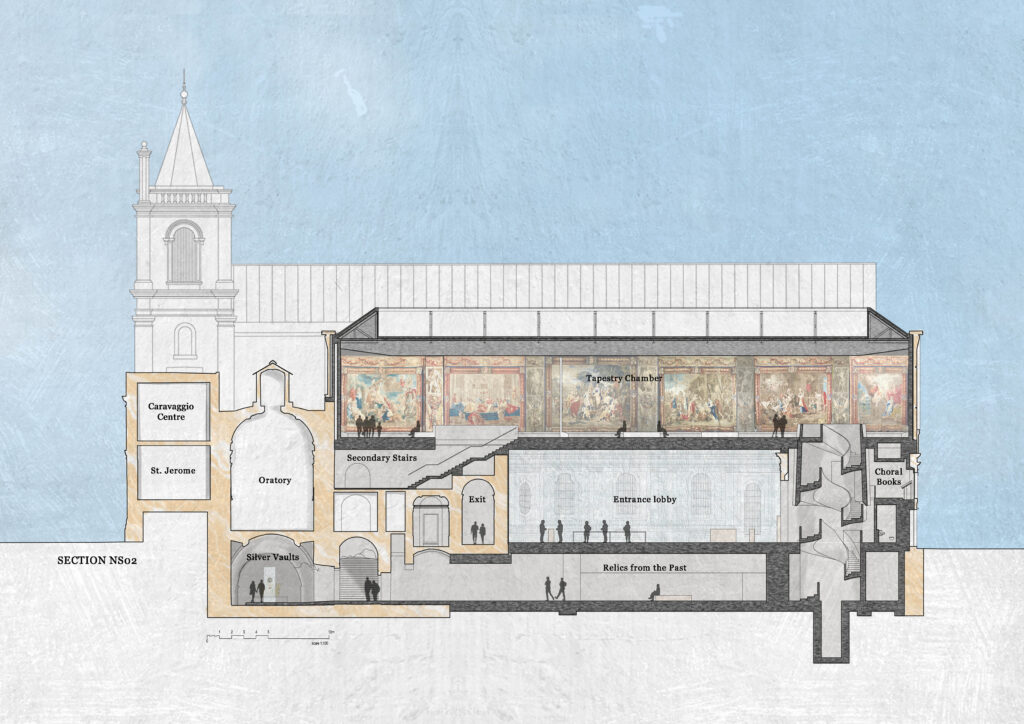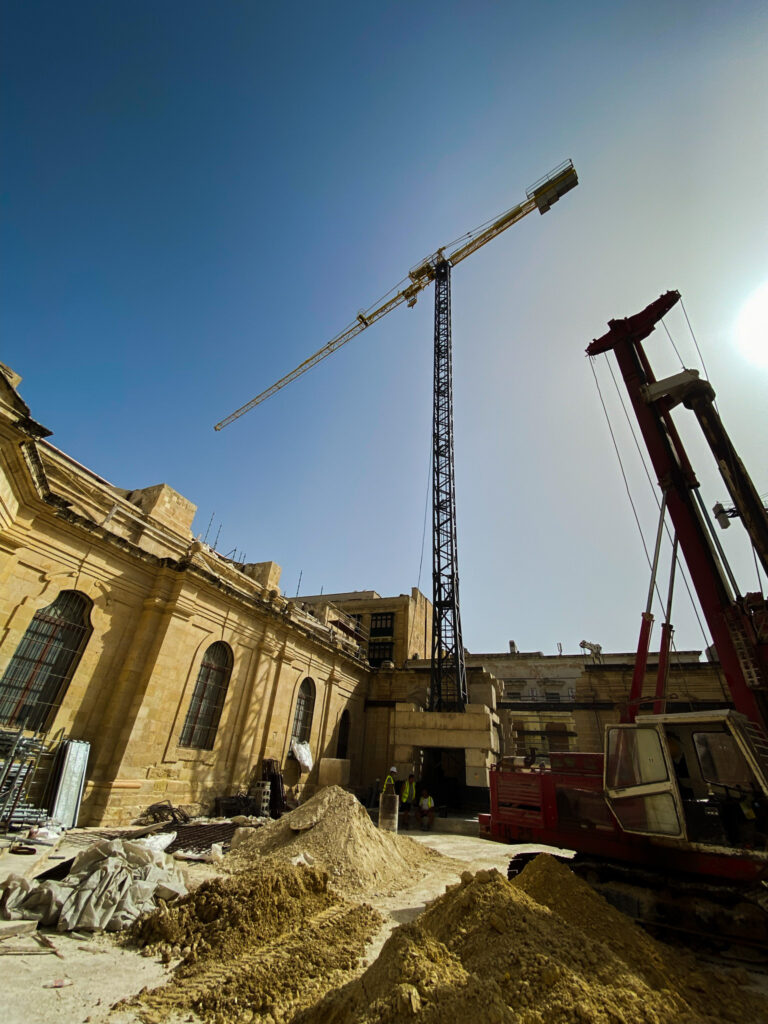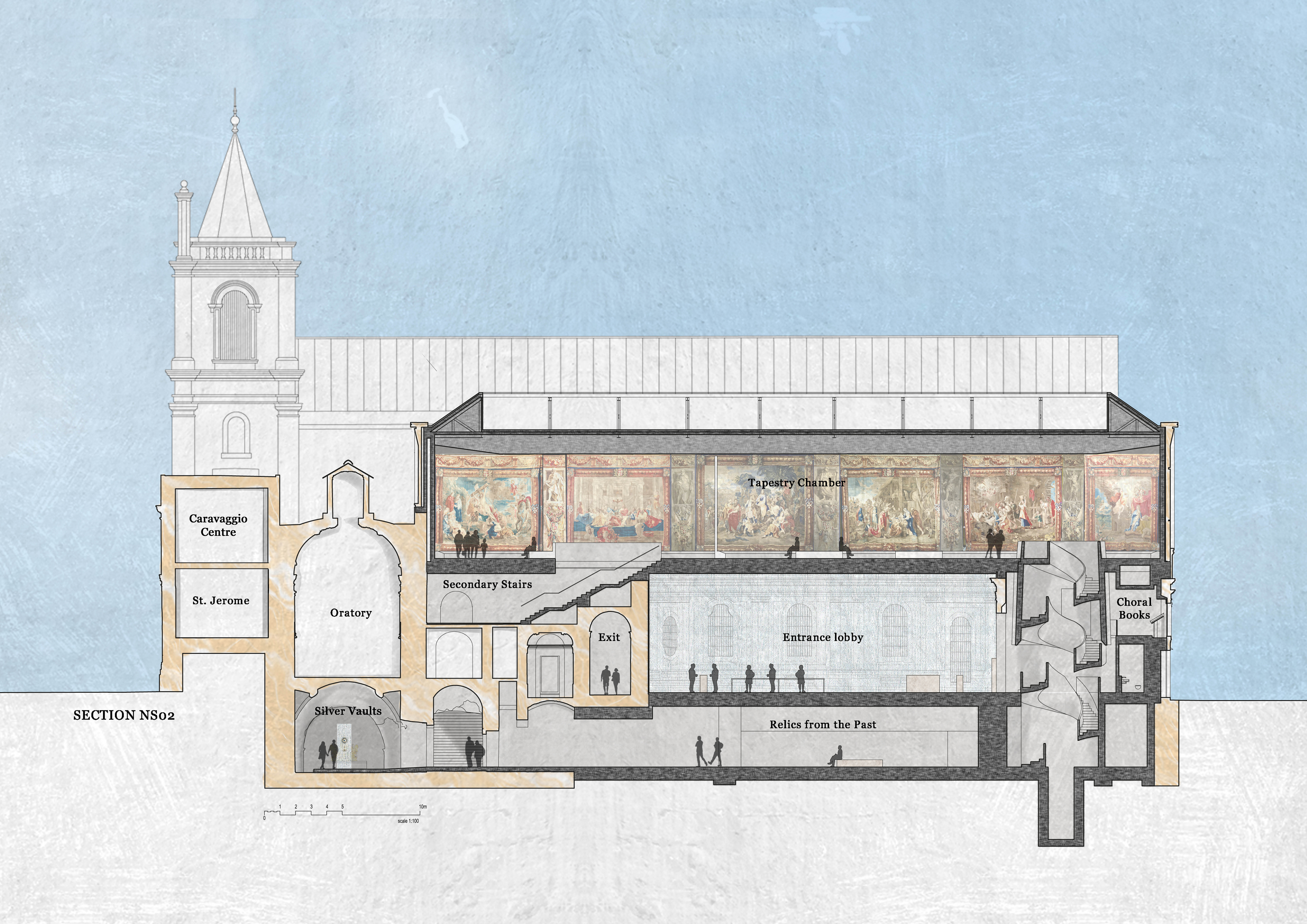
Passers-by in Merchants Street will notice a tower crane erected on site where the Tapestry Chamber is going to be constructed, together with the spiral staircase and a piston lift that is unique to Malta. Although not much is visible to the public, a large amount of work and intense preparations were being carried out. The Foundation’s consultants AP Valletta and EM Architects are working together to complete this project.
Firstly, geological tests were carried out to ensure the foundations on which the Tapestry Chamber will be built are adequate. To ensure this will be up to the current standards, the ground will be strengthened with a wall consisting of concrete columns driven into the ground in specific areas. Naturally, many more studies and structural engineering input were necessary. In all, 170 concrete columns will be placed into the foundations that will protect the historical rubble fills that was once a burial ground. Extensive research and investigations were conducted to ensure that no historical material was lost. For the past two years, excavation, all done by hand, was carried out by a group of archaeologists under the supervision of the Superintendence of Cultural Heritage (SCH) who have been providing guidance to integrate and protect any findings.
The project of restoring and constructing new areas entails interventions in one of Malta’s most historically important monuments. Continuous discussions are held with the Planning Authority, Superintendence of Cultural Heritage, Valletta Local Council, Transport Malta, and the Shop Owners’ Association in Valletta. Thus, all the decisions taken, and adjustments made to the existing fabric are carried out with utmost care and based on in-depth research and investigations, to ensure sound knowledge of the site. Any changes to the original permit are subject to the approval of the Superintendence of Cultural Heritage, the Planning Authority and UNESCO.

The new foundations and the construction of the tapestry chamber and other restoration works were entrusted to AX Construction Ltd and commenced last April. Significant progress has been recorded to date, with the installation of steel reinforcement for the stabilising columns before applying the concrete cast.
As investigations were being carried out, tenders for works on the area to house the Caravaggio Wing were initiated. The ground floor consists of a hall that will exhibit the painting depicting ‘St Jerome’ by Caravaggio, and the audio-visual space that will project the story of the artist and his stay on the island, and a hall that will project the famous painting by Caravaggio, ‘The Beheading of St John the Baptist’. The works have reached completion and the Wing will be opened shortly. The restoration of the crypt below the oratory and the basement spaces will soon commence. Together with the Caravaggio Wing, the rehabilitation of these areas is part-financed by the European Regional and Development Fund.
The aim of the new museum is to utilise the buildings adjacent to the Co-Cathedral to accommodate the artefacts currently kept in storage. The extension works include the rehabilitation of the existing areas within the basement level, the restoration of the Bartolott Crypt, the construction of a new Tapestry Chamber, the Caravaggio Wing and a new entrance/ exit and ticketing area from Merchants Street that will separate the Museum from the Church.






